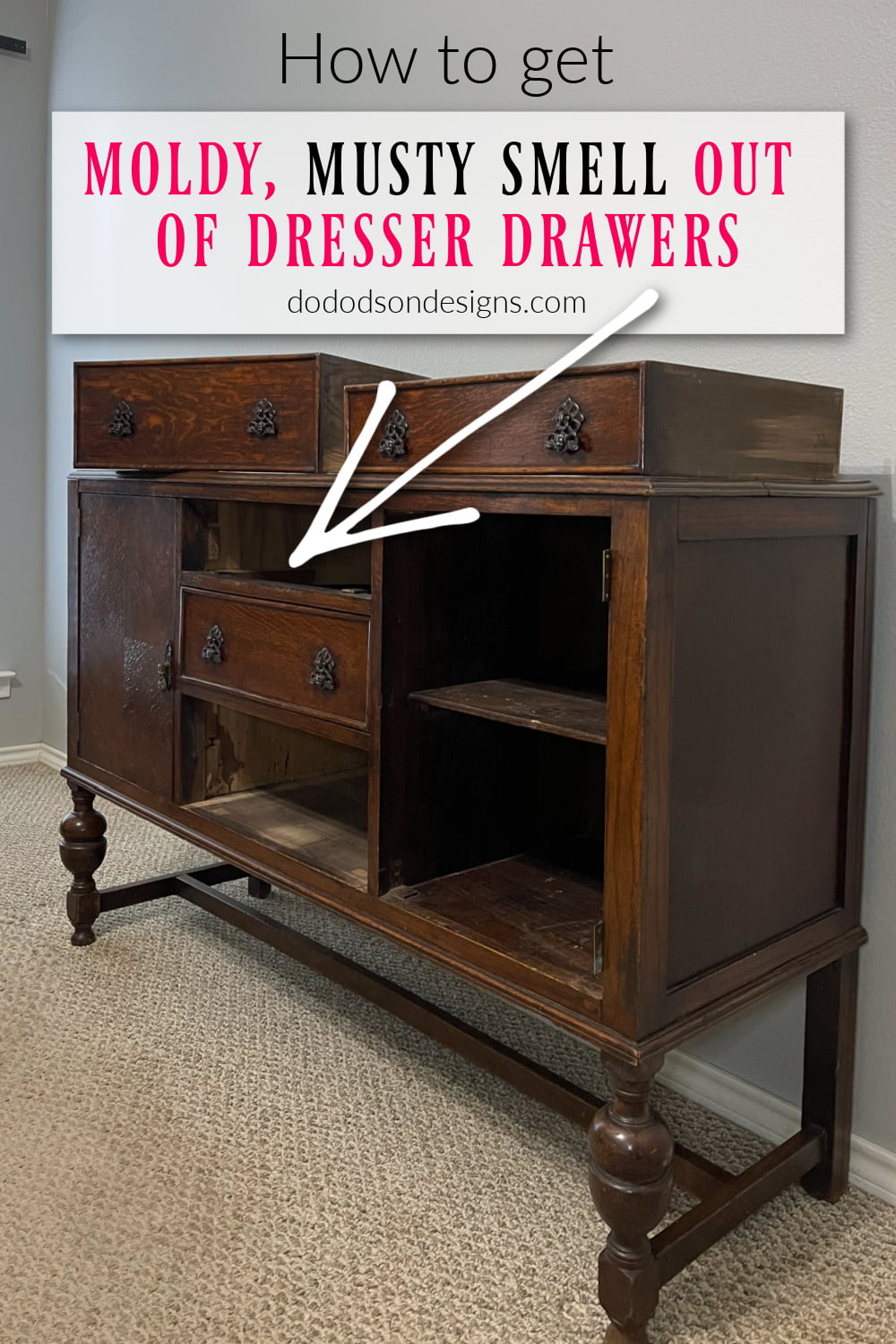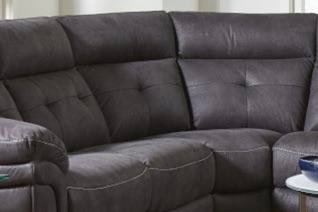As an Amazon Associate I earn from qualifying purchases.
Getting the moldy smell out of furniture can be tricky. But it’s possible with the right steps.
Moldy smells are not just unpleasant; they can also indicate the presence of mold, which is harmful. Mold grows in damp conditions and can affect your health and home environment. If you notice a musty odor from your furniture, it’s time to act.
Removing the moldy smell requires a combination of cleaning and drying techniques. The good news is that you can use household items to tackle this issue. In this guide, we will explore effective methods to eliminate that moldy smell. By following these steps, you can restore your furniture’s freshness and ensure a healthier home environment. Ready to breathe easier? Let’s get started!
Identifying Moldy Smells
Recognizing a moldy smell in furniture is crucial. Mold can cause health issues and damage to your furniture. Identifying these odors early can help you take quick action.
Recognizing The Odor
Moldy smells are often described as musty or earthy. They may remind you of damp, wet, or decaying wood. The odor is persistent and unpleasant.
Here are some common characteristics:
- Musty: A stale and damp smell.
- Earthy: Similar to the smell of soil or rotting leaves.
- Persistent: The smell doesn’t go away easily.
- Unpleasant: The odor is often strong and off-putting.
Common Causes
Moldy smells in furniture can come from various sources. Some of the common causes include:
| Cause | Description |
|---|---|
| Humidity | High humidity levels can lead to mold growth. |
| Water Damage | Leaks or spills that are not cleaned up promptly. |
| Poor Ventilation | Areas with little airflow can trap moisture. |
| Organic Material | Mold feeds on organic materials like wood and fabric. |
Understanding these causes can help you prevent moldy smells in your furniture. Regularly check for signs of moisture and ensure proper ventilation.

Credit: sarahjoyblog.com
Initial Cleaning Steps
Dealing with a moldy smell in your furniture can be frustrating. But the right initial cleaning steps can make a big difference. Start by removing visible dirt and dust. Then move on to deeper cleaning methods.
Vacuuming The Surface
Begin by vacuuming the surface of your furniture. Use a vacuum cleaner with a HEPA filter to capture mold spores. Make sure to vacuum all areas, including crevices and seams.
- Attach the brush nozzle to your vacuum.
- Gently run the vacuum over the furniture surface.
- Focus on corners and hidden spots.
This step helps to remove loose mold spores and dust. Vacuuming is essential before using any cleaning solution. It prevents the spread of mold during further cleaning.
Using Mild Detergents
After vacuuming, clean the furniture with a mild detergent. Avoid harsh chemicals that can damage the furniture material.
- Mix a few drops of mild detergent with warm water.
- Dip a soft cloth into the solution and wring it out.
- Wipe the furniture surface gently.
Ensure you cover all parts of the furniture, including the legs and back. Mild detergents help break down mold and remove the smell. Rinse the cloth frequently to avoid spreading mold.
For stubborn spots, use a soft brush with the detergent solution. Scrub gently to avoid damaging the material.
Using mild detergents ensures the furniture remains clean and undamaged. This step is crucial for eliminating the moldy smell.
| Step | Action | Purpose |
|---|---|---|
| Vacuuming | Use a HEPA vacuum | Remove mold spores and dust |
| Detergent Cleaning | Use mild detergent and water | Break down mold and remove smell |
Natural Remedies
Removing a moldy smell from furniture can be a daunting task. Using natural remedies is a safe and effective way to tackle this issue. This section will cover two popular natural remedies: baking soda and white vinegar.
Baking Soda
Baking soda is a powerful odor absorber. It is safe for most furniture types. Here’s how to use it:
- Sprinkle a generous amount of baking soda on the affected area.
- Let it sit for at least 24 hours.
- Vacuum the area to remove the baking soda.
For stubborn odors, repeat the process. Baking soda can be used on both fabric and wooden furniture.
White Vinegar
White vinegar is another effective natural remedy. It has antimicrobial properties. It helps eliminate mold spores. Here’s how to use it:
- Mix equal parts of white vinegar and water in a spray bottle.
- Spray the solution on the affected area.
- Let it sit for an hour.
- Wipe the area with a clean cloth.
For fabric furniture, you can repeat the process if needed. Ensure the area is well-ventilated to help it dry faster.

Credit: www.dododsondesigns.com
Chemical Solutions
Moldy smells in furniture can be removed with a simple chemical solution. Mix white vinegar and water, then spray the affected area. Let it dry completely to eliminate the odor.
Chemical solutions can effectively remove moldy smells from furniture. These solutions are readily available and easy to use. They work well in eliminating stubborn odors.Commercial Cleaners
Commercial cleaners are designed to tackle mold and mildew. They come in spray bottles and are easy to use. Apply the cleaner to the moldy area. Let it sit for the time specified on the label. Wipe the area with a clean cloth. Repeat if the odor persists.Using Hydrogen Peroxide
Hydrogen peroxide is another effective solution. It kills mold and removes odors. Mix one part hydrogen peroxide with two parts water. Pour the mixture into a spray bottle. Spray the affected area and let it sit for 10 minutes. Wipe the area with a clean cloth. Ensure proper ventilation while using hydrogen peroxide.Deep Cleaning Techniques
Deep cleaning techniques can effectively remove moldy smells from furniture. These methods not only target the odor but also eliminate mold spores. Below are some proven techniques for deep cleaning your furniture.
Steam Cleaning
Steam cleaning is a powerful method to remove moldy smells. The high temperature of the steam kills mold spores. This method also reaches deep into fabrics and crevices. Use a steam cleaner with a fabric attachment for best results. Move the steamer slowly over the surface. Allow the furniture to dry completely to prevent new mold growth.
Using An Ozone Generator
An ozone generator is another effective tool. It neutralizes mold spores and eliminates odors. Place the furniture in a small, enclosed space. Run the ozone generator according to the manufacturer’s instructions. This method works well for both upholstered and wooden furniture. After treatment, air out the furniture in a well-ventilated area. This step ensures the removal of residual ozone and odors.
Preventing Future Mold Growth
Eliminate moldy smells from furniture by using vinegar and baking soda. Ensure proper ventilation to prevent future mold growth. Regular cleaning helps maintain a fresh environment.
Preventing future mold growth is crucial for keeping your furniture fresh. Mold can cause health problems and damage your belongings. By taking simple steps, you can keep your home mold-free.Controlling Humidity
Humidity is a major factor in mold growth. Keep indoor humidity levels below 60%. Use a dehumidifier if needed. Open windows and doors to let air circulate. This reduces moisture buildup. In damp areas, use moisture-absorbing products like silica gel.Regular Maintenance
Regular maintenance helps prevent mold growth. Clean furniture regularly with a mild detergent. Avoid using too much water. Dry surfaces completely after cleaning. Check for signs of mold in hidden areas. Early detection is key to stopping mold spread. Move furniture away from walls to improve air flow. This helps prevent moisture buildup. “`Treating Upholstered Furniture
Upholstered furniture can trap moldy smells. This can be unpleasant and unhealthy. Here are effective ways to remove these odors.
Cleaning Fabric Surfaces
Start by vacuuming the fabric thoroughly. Use an upholstery attachment to remove dust and debris. Next, prepare a cleaning solution. Mix warm water with mild dish soap. Dip a soft cloth in the solution and wring it out. Gently scrub the fabric in circular motions. Focus on areas with visible stains or mold. Avoid soaking the fabric to prevent damage. Allow the furniture to air dry completely.
Removing Odors From Cushions
Cushions often absorb unpleasant smells. To freshen them, remove cushion covers if possible. Wash them according to the care label. For non-removable covers, sprinkle baking soda on the surface. Let it sit for 15 minutes. Vacuum the baking soda thoroughly. This helps to neutralize odors. If the smell persists, consider using a fabric refresher spray. Ensure proper ventilation to aid drying and odor removal.
Dealing With Wooden Furniture
Remove the moldy smell from wooden furniture by cleaning it with a mixture of white vinegar and water. Let it dry completely in a well-ventilated area.
Wooden furniture can add charm and elegance to your home. Yet, moldy smells can ruin this appeal. Removing these odors requires care. You want to clean the wood without damaging it. Below are steps to help you achieve this.Cleaning Wood Safely
First, use a soft cloth to dust the furniture. This removes loose dirt and debris. Next, mix a mild soap with water. Dip a clean cloth in this solution. Wring out excess water. Gently wipe the wooden surfaces. Avoid soaking the wood. Excess moisture can cause more mold. Baking soda can help too. Sprinkle some on a cloth. Gently rub the surface. Baking soda absorbs odors. After cleaning, wipe the wood with a dry cloth. This ensures no moisture remains.Protecting Wood Finishes
After cleaning, protect the wood finish. Use a wood polish or wax. Apply a thin layer with a soft cloth. This creates a barrier against moisture. It also restores the wood’s shine. Keep furniture away from damp areas. Use a dehumidifier if needed. This prevents mold from coming back. Regular dusting and polishing also help maintain the wood. By following these steps, you can keep your wooden furniture fresh and mold-free. “`
Credit: www.dododsondesigns.com
Frequently Asked Questions
What Causes Moldy Smell In Furniture?
Moldy smell in furniture is usually caused by mold or mildew growth. This happens due to moisture and poor ventilation. Mold thrives in damp, dark environments.
How Can I Prevent Mold In Furniture?
To prevent mold, keep furniture dry and well-ventilated. Use dehumidifiers in damp areas. Regularly clean and inspect for signs of mold.
What Household Items Remove Moldy Smell?
Baking soda, vinegar, and activated charcoal can help remove moldy smells. These items absorb moisture and neutralize odors effectively.
Is Mold In Furniture Dangerous?
Yes, mold in furniture can be harmful. It can cause allergies, respiratory issues, and other health problems. It’s important to address it promptly.
Conclusion
Removing moldy smells from furniture can be easy and effective. Start with basic cleaning methods. Use natural solutions like vinegar or baking soda. Ensure proper ventilation to prevent future mold growth. Regular maintenance helps keep your furniture fresh. Following these steps ensures a pleasant and odor-free home environment.
Enjoy your clean, fresh-smelling furniture. Feel confident in your mold-removal efforts. Keep your living space healthy and inviting. A little effort goes a long way in maintaining clean furniture.
As an Amazon Associate, I earn from qualifying purchases.


